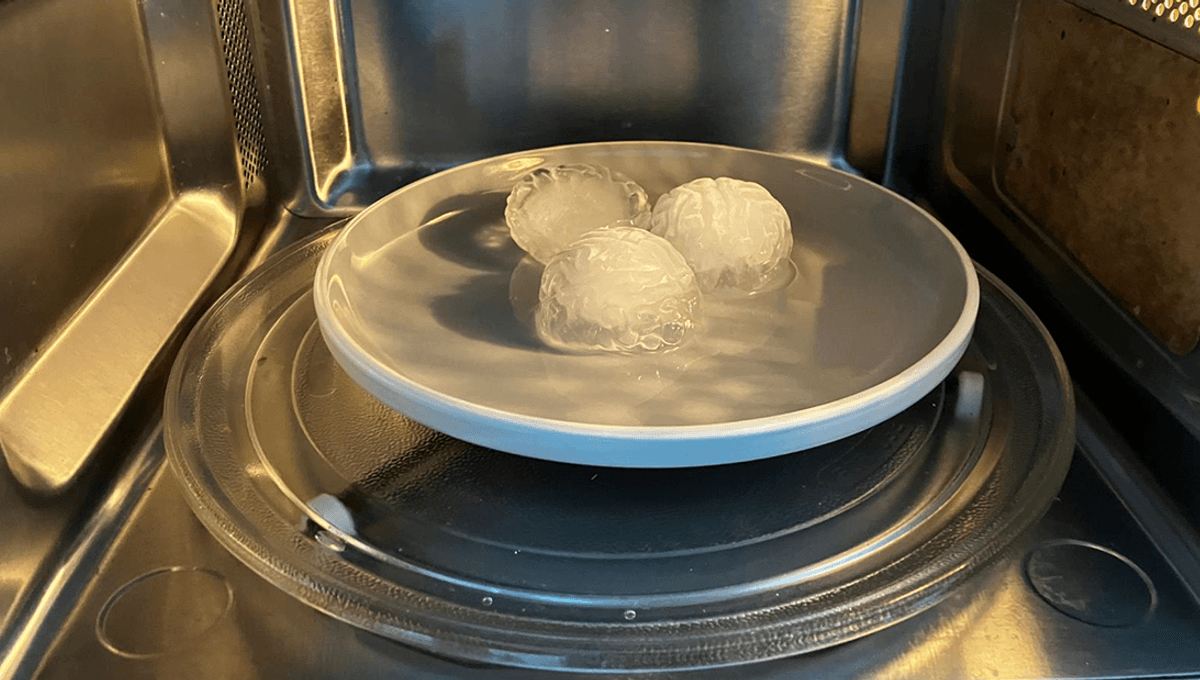
Microwaves are a pretty difficult topic to get your head around, at least compared to traditional “fire hot” methods of cooking. It turns out people still have questions about them, such as why if you put ice in a microwave with rice, the rice gets hot and the ice cube doesn’t seem to.
Let’s start with how microwaves work.
“Microwaves are produced inside the oven by an electron tube called a magnetron. The microwaves are reflected within the metal interior of the oven where they are absorbed by food. Microwaves cause water molecules in food to vibrate, producing heat that cooks the food,” the US Food and Drug Administration explains. “That’s why foods that are high in water content, like fresh vegetables, can be cooked more quickly than other foods.”
There is a common belief that microwaves are tuned to the vibrational frequency of water molecules, and ice isn’t as affected by microwaves because its molecules aren’t free enough to enter this same vibrational mode. But this is wrong on a couple of points.
First, microwaves are not tuned to the specific resonance frequency of water, but produce several broad peaks in the frequency spectrum which can also be affected by factors like the orientation of the food within the microwave.
“In reality, this myth is just that, a myth,” Ron Schmitt, former Director of Electrical Engineering at Sensor Research and Development Corp explained in the book Electromagnetics Explained. “[T]here is no resonance of water at this frequency. The first resonant peak occurs above 1 THz, and the highest loss occurs well into the infrared. There is no special significance of 2.45 GHz, except that it is allocated by the FCC as being allowable for microwave oven usage.”
Second, solids are pretty good vibrators. The tightly bound atoms allow vibrations to pass through more quickly than in a liquid or gas, which is why sound is quicker passing through (e.g.) metal than air or water.
“So how do microwaves in an oven heat food if they are not tuned to a specific resonant frequency of water? They heat the food through simple dielectric heating,” Dr Christopher S. Baird, Associate Professor of Physics at West Texas A&M University explained in a university blog post.
“In dielectric heating, the electric field in the electromagnetic wave exerts a force on the molecules in the food, causing them to rotate in order to align with the field. Because of this rotating motion, the molecules collide into each other and convert their somewhat ordered rotational motion into disordered motion, which we macroscopically call heat. Many types of molecules in the food absorb energy from the microwaves in this way, and not just water molecules.”
While the molecules in ice are able to vibrate just fine, they are much less able to rotate due to hydrogen bonds formed with neighboring water molecules. Fewer collisions and less disordered motion result, and so ice takes longer to melt in the microwave.
While there is another common myth that the food is cooked from the inside out in a microwave, this also is not correct, with the outside receiving heat from microwaves and the insides being cooked through traditional conduction. So if you do have a big chunk of ice in the microwave, conduction will help to heat it up.
Source Link: Something Weird Happens When You Try To Microwave Ice